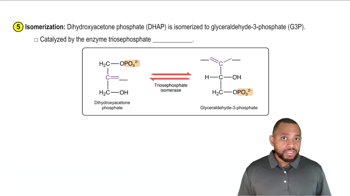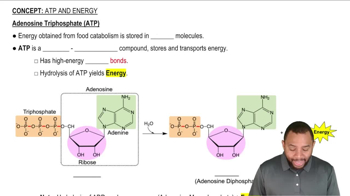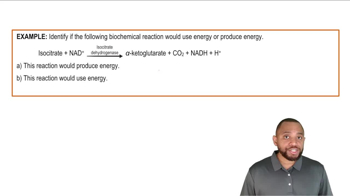How many ATP or NADH are produced (or required) in each of the following steps in glycolysis?
a. glucose to glucose-6-phosphate
 Verified step by step guidance
Verified step by step guidance Verified video answer for a similar problem:
Verified video answer for a similar problem:



 3:14m
3:14mMaster Glycolysis Summary Concept 1 with a bite sized video explanation from Jules
Start learning